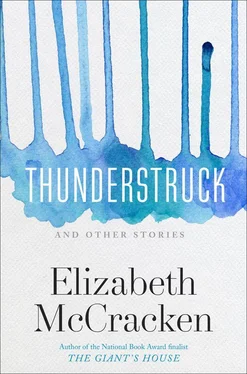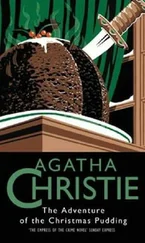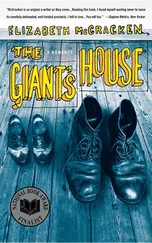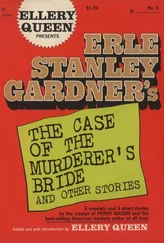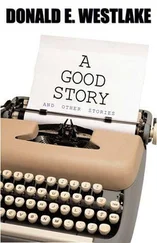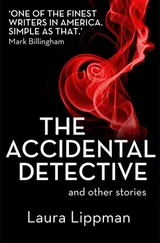In this the rabbit was not so different from the head of reference, who had been cranky for so long his bad mood had turned to superstition, a primitive who believed that the requests for addresses and statistics from the reference collection were akin to soul stealing. He was particularly suspicious of Juliet. Too sunny, that one, and the way she said hello, every single time: she wanted something. She was formulating an immense, subtly impossible, demanding, deadly reference question, one that would begin in the almanacs kept at the desk and then lead to encyclopedias, newspaper articles, and finally some now-unknown reference book kept in the basement, some cursed volume that turned its opener to dust. Even then, there would be no answer.
“I don’t trust her,” said the head of reference. “She wants something.”
The other librarians bumped into one another behind the reference desk, trying to intercept patrons before they got to the head of reference, who claimed to be ignorant of any subject that sounded vaguely scientific.
We heard the big news slowly. There had been a murder. A woman. A woman from our town, killed in her own house. A woman stabbed ten times, twenty, sixty-three. It was as if the police were taking forever to examine the body and called up the local gossips to report: we found five more wounds in the last hour. You could see the cops, turning the body over and over, looking for what was neither evidence nor cause of death — she’d died after her poor body had caught the knife only a few times — one officer with a pencil and white pad, making hash marks. The final count was ninety-six.
A murder. We hoped for two things: that we did not know the victim and that the murderer did. Please , we prayed, though we never said those prayers aloud, let it be a husband, a boyfriend . We wanted to read in the paper: Last week, she filed for a restraining order . Hadn’t every murdered woman? None of the library staff had ever asked for a restraining order, except the assistant director, who’d filed one against his sister. That was entirely different.
And then, on the evening news, we saw her picture: Juliet.
It wasn’t the usual blurry victim snapshot, the kind that makes it seem as if the last thing the person did, before hauling off and getting killed, was to indulge an elderly uncle with a camera. Juliet’s picture — the one that appeared on all the newscasts, on the covers of all the papers — was clear and sharp and pretty. Her hair was done. She was wearing a white strapless gown. Depending on how the paper or channel cropped the picture, you could see the shoulder of her date, wearing a white jacket and black bow tie. He was still alive; you didn’t need to see any more of him. He wasn’t a suspect.
Her name was Suzanne Cunningham. She was thirty-four. She was, in fact, divorced (we’d suspected) and had three children (we’d had no idea). The oldest, a boy, was fifteen; the two girls were twelve and thirteen. The children’s librarian had known all of this, of course, but would not answer questions. In fact, she had taken several days off work around the time of the murder, and we made a few dark jokes about how suspicious that seemed. Oh, that sweetness and light and arts-and-crafts stuff, that didn’t fool us. She must be a sadist. Look how she treats that poor rabbit.
We didn’t believe our jokes, but we needed them. Our town was near a big city, but it wasn’t the big city. The famous names of murderers and murdered women — they often shared the same name, of course — were featured in the metropolitan paper, not ours. We had never seen the faces close up or walked by the houses.
The only thing the children’s librarian said, when she came in to ask the director for the rest of the week off, was, She knew. She knew someone was after her .
One of the reference librarians confirmed it: Suzanne Cunningham had once asked for a book that would tell her how to keep people out of her house. Burglars? the librarian had asked. Anyone , Suzanne Cunningham answered. I think someone has been sneaking into my house . So the librarian had found a crime-prevention book, which Suzanne Cunningham smiled at and set down on a table without reading.
That made us feel better — a boyfriend, surely, or even her ex-husband — but we wondered why the newspapers didn’t say so. The book she carried: it must be a diary — it must have clues. We wondered why she hadn’t called the police. Someone sneaks into your house, you have to be worried, don’t you?
Maybe not. Maybe you don’t know that someone has been there — you just suspect. Nothing is broken or rearranged; no pets have been menaced. There’s just the lingering, careless presence of someone who doesn’t know how the house works. The back door has to be closed with both a knee and a shoulder; the kitchen faucets must be turned off with a wrench; mud must be knocked from shoes and the portable phone doesn’t always want to hang up and the fridge door will float open if you aren’t careful. And then one day, when the kids are with their father — thank God, as it turns out — you come home and surprise him in your kitchen. Maybe you’ve known all along who it was.
And maybe he even has a crush on you. That’s the thing about crushes — sometimes they fly below the radar, the way in high school, when someone told you a boy had a crush, you could tell by the way he ignored you. The way he ignored you meant everything. A terrible word, crush — you could die from crushing, from having one, anyhow; you remember listening to music that meant the world to you and nothing, you were quite sure, to your beloved. Who knows what teenagers listen to today; your own boy plays music that you can’t imagine swooning to; your own boy is friends with this boy, who is now in your kitchen, licking his lips nervously to oil up his mouth. You know everything about this kid: a neighborhood babysitter, sixteen years old but enormous, big enough to gently swing a laughing five-year-old over his head without fear; an altar boy who goes to the library to pick up books for his grandfather, in his pocket the grandfather’s faultless library card; a part-time drugstore clerk; a good boy who loves his parents, whose parents love him.
What you don’t know is that he has a knife, and that you have frightened him.
Ninety-six times, though. We couldn’t imagine it. We tried it ourselves, started to hit our own knees softly, ninety-six times. We gave up, we got tired, we made ourselves sick.
Four days later, they made the arrest. The accused was the blond boy whose father had come in screaming. Another library patron. We all knew him, too: Tommy Mason. The Masons were a big, famous family in our town. Tommy Mason’s grandfather had been mayor once, back in the 1950s.
An altar boy, a good boy, a boy with a library card. Could such a boy possibly be guilty? He lived across the street from the dead woman. He had shoveled her walk in the winter; his sisters had sold her Girl Scout cookies. He was good friends with Suzanne Cunningham’s oldest child, Kevin. Kevin Cunningham had found his mother’s body.
Within twenty-four hours, every library staff member who knew how had looked up the accused’s library record. Tommy Mason’s card was still delinquent, told us nothing: a single book called Soap Science , no doubt for school. We looked at the record for the book daily — the title, the author (Bell), the publication date (1993), the due date (May 4, two years ago). We wanted to know something. These were the only facts we had.
We weren’t supposed to do that, of course. We were supposed to be bound by ethics and privacy, but it felt as if we could break them, the way that cannibalism, in certain extreme cases, is acceptable.
Читать дальше
